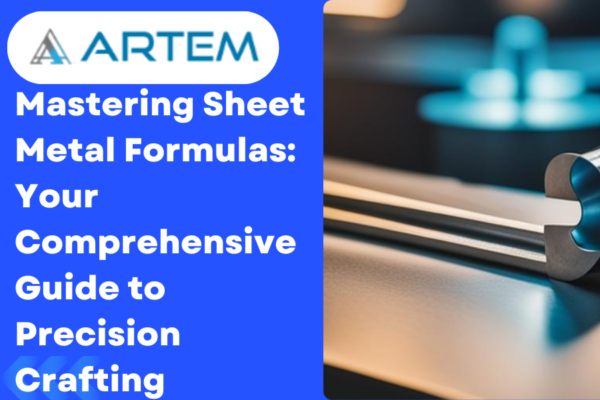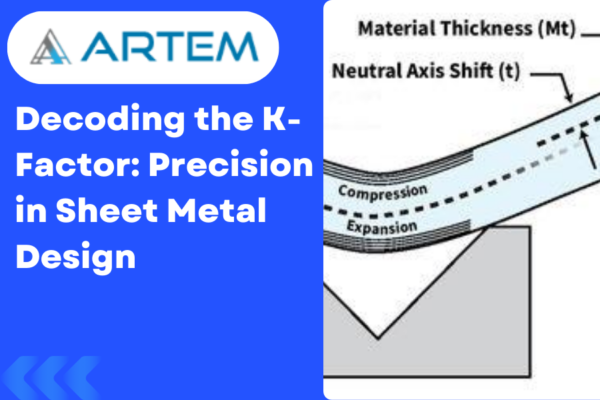Unveiling Sheet Metal Formulation: A Practical Beginner’s Guide
Welcome to the world of sheet metal formulation, where flat sheets transform into intricate structures with the precision of a craftsman’s hands. Whether you’re an aspiring engineer or a DIY enthusiast, understanding the basics of sheet metal formulation is a fundamental step toward bringing your designs to life. In this blog, we’ll unravel the essential concepts and techniques, using practical examples to guide you through the process.
- The Raw Material: Types of Sheet Metal
Before we dive into the formulation process, let’s familiarize ourselves with the raw material. Common sheet metal materials include steel, aluminum, and stainless steel. Each material has its unique properties, influencing factors such as strength, weight, and corrosion resistance.
Example: If you’re designing a lightweight panel for an enclosure, aluminum might be a suitable choice due to its low density and corrosion-resistant nature.
- Getting Started: Basics of Sheet Metal Formulation
2.1 Blank Development: Unfolding the Sheet
The first step in sheet metal formulation is the development of a blank, which is the flat pattern of the final 3D shape. This process involves unfolding the sheet metal to create a 2D representation that can be cut and bent.
Example: Let’s say you’re designing a simple rectangular box. The blank development involves unfolding the sheet to create a flat pattern that, when bent and assembled, will result in the box shape.
2.2 Bending: Shaping the Material
Bending is a critical aspect of sheet metal formulation. It involves deforming the sheet metal along a straight axis to create angles or curves, bringing the flat pattern into its 3D form.
Example: Continuing with our rectangular box example, the bending process would involve folding the flat pattern along predefined lines to create the box’s sides and edges.
- Advanced Techniques: Adding Features to Your Design
3.1 Flanges: Extending the Design
Flanges are extensions of the sheet metal that add depth to the structure. They can be simple bends or more complex shapes, allowing you to create features such as tabs or reinforcement.
Example: In our box design, adding flanges could involve extending certain edges to create a lip or reinforcement for added strength.
3.2 Holes and Cutouts: Modifying the Material
Introducing holes and cutouts is a common practice in sheet metal design. These features not only reduce weight but also serve functional purposes, such as allowing ventilation or accommodating fasteners.
Example: You might add ventilation holes to the sides of your box design or cutouts for screws to assemble the components.
- Putting It All Together: Assembling Sheet Metal Components
Once you’ve mastered the individual components, the final step is assembly. Understanding how different sheet metal parts come together ensures a seamless and functional end product.
Example: Taking our box design, assembly would involve aligning the edges and fastening the components, creating a solid and well-constructed box.
Here’s the information presented in a tabular form for easy reference:
| Aspect | Explanation | Example |
|---|---|---|
| Raw Material | Common sheet metal materials include steel, aluminum, and stainless steel. | Choosing aluminum for a lightweight panel in an enclosure. |
| Blank Development | Unfolding the sheet to create a 2D representation for cutting and bending. | Creating a flat pattern for a rectangular box design. |
| Bending | Deforming the sheet metal along a straight axis to create angles or curves. | Folding the flat pattern along predefined lines for the box. |
| Flanges | Extensions adding depth to the structure, creating features like tabs or reinforcement. | Extending certain edges to create a lip in the box design. |
| Holes and Cutouts | Introducing features for reducing weight and serving functional purposes. | Adding ventilation holes or cutouts for screws in the box. |
| Assembly | Aligning edges and fastening components to create a solid and well-constructed product. | Assembling the different parts of the box design. |
Conclusion: Crafting with Precision
Sheet metal formulation is a captivating journey where creativity meets precision. As you venture into creating your own sheet metal designs, remember the basics: unfolding the sheet, shaping it through bending, and adding features to enhance functionality. With these foundational skills, you’ll soon find yourself crafting a variety of sheet metal structures with confidence and precision. Happy formulating!



